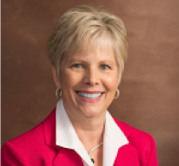What’s your litmus test for quality service?

Staying focused on what it means to fully meet account holders’ needs has become a key requirement for maintaining high member loyalty ratings. This is especially true as technology and non-traditional financial service providers transform the competitive landscape. In a recent survey by Consumer Reports, 72,000 participants weighed in on their satisfaction levels of 69 traditional banks, 70 credit unions and nine online banks. Their responses indicated that they were generally happy to highly satisfied with the service they received, depending on what type of financial institution they relied on for services.
How do you decide what products and services your members receive?
As the survey data reveals, staying on top of convenience and accessibility is critical. But, if you are making product and service decisions based solely on what you think account holders need, or what your competition is offering, you are likely missing out on an opportunity to differentiate yourself from other providers in your market, not to mention online competitors.
The best way to become or remain the go-to financial services resource is to communicate with your members about their financial needs and challenges on an on-going basis.
Are you willing to change your mindset to meet member needs?
On the surface, this may sound like a no-brainer. But the idea of trying something new or updating an existing strategy that isn’t providing optimal results is a challenge we all face occasionally. In some cases, time restraints or lack of staff to handle additional responsibilities are to blame. For others, a philosophical leaning may stand in the way of providing a service that could benefit members, as well as the credit union for that matter. And while the rationale for avoiding change might seem reasonable, failure to act can limit an institution’s value as a service provider and hamper its performance potential as well.
For instance, do you notice that some members have a difficult time maintaining a positive balance just before payday? Do you hear stories from others who find themselves temporarily short of funds because of an unexpected expense or emergency? When these situations occur, do you have solutions to offer, such as a fully disclosed overdraft program? If so, can your frontline staff effectively explain the service, including how responsible use can get the member through a temporary shortfall?
If you’re not sure whether or not you are providing the most up-to-date services to meet your members’ needs, or you’re hesitant to extend an overdraft privilege to certain individuals – because of narrow eligibility criteria or uncertainty regarding the value the program can provide – it’s time to re-evaluate your service strategy.
The need exists in many forms
While we are living in a stable economy, every financial institution has account holders who struggle from time to time and experience a shortfall in their checking account. Whether it’s an auto mechanic who is short the funds he needs to purchase parts to complete a customer’s car repair; a single mother who needs to buy a new tire so she can get to work; a couple that experiences a higher than expected income tax responsibility; a retiree who faces emergency medical expenses or a new car owner who is quoted an incorrect estimate on her insurance premium that overdraws her account by a few dollars, unexpected expenses arise. How your credit union chooses to handle the situation has an enormous impact on the value your members place on their relationship with the institution.
Does your overdraft strategy pass the quality service test?
A fully disclosed overdraft solution best conveys a member-focused philosophy which also expands your institution’s ability to provide exceptional service and increase non-interest income. When evaluating your strategy, here are a few important considerations to keep in mind:
- An in-depth training program around implementation and best practices is employed to ensure all frontline staff understand the value the service provides for members. It will not only improve their confidence in how to explain the program, it will have a significant impact on program use and service quality.
- Fully compliant messaging in all communications materials is used to keep program users informed about their account status. For your members, this will reinforce how they can use overdraft services responsibly. It is also an effective way to educate them about other products and services you provide for monitoring their account balance.
- Up-to-date analytics and tracking software are in place to help you keep track of program usage and monitor non-interest income earnings potential.
Start with what the member needs and work backwards.
How is your credit union addressing the service needs in your field of membership? Are you taking the initiative to tailor your services to meet the needs of all members – including those who may struggle to keep their account positive or need a safety net from time to time – or just focusing on those who are more comfortable and financially secure?
If you surveyed your membership today on whether or not you were meeting their needs, how would you score on the service quality test? Adding a fully disclosed, compliance-guaranteed overdraft program to your product offerings – or updating an outdated program – will definitively demonstrate that you care about helping your members in good times and bad.





